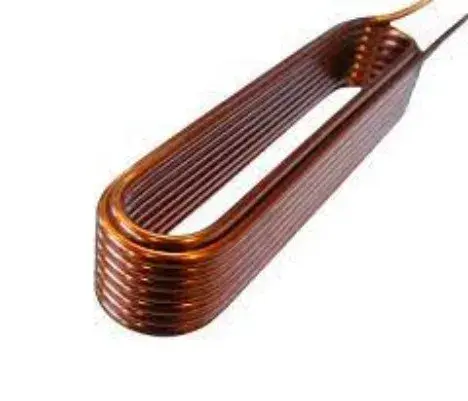Choosing between solid copper and stranded wire impacts safety, cost, and compliance. From 14 AWG stranded copper wire in robotics to #4 solid copper wire in residential panels, this guide compares their pros, cons, and code requirements to help you decide.
Core Differences: Solid vs Stranded Copper Wire

1. Flexibility & Durability
- Stranded Copper Wire:
- Contains multiple thin strands (e.g., 4 0 7 strand copper wire with 7 conductors).
- Resists metal fatigue, ideal for vibrating machinery (NEC 400.14) or robotics (ISO 10218-2).
- Example: 14 2 stranded copper wire in automotive harnesses lasts 3x longer than solid wire.
- Solid Copper Wire:
- Single conductor; prone to cracking under repeated bending.
- Best for static installations like service panels.
2. Conductivity & Resistance
- Solid Wire: Slightly better current flow due to no air gaps (IEC 60228 Class 1).
- Stranded Wire: May have 2-3% higher resistance but compensates with heat dissipation (UL 83).
3. Cost Comparison
- Stranded Wire: 15-30% more expensive due to complex manufacturing.
- Solid Wire: Economical for fixed circuits (e.g., #4 stranded copper wire vs solid: 1.50vs1.50vs1.10 per foot).
International Standards for Wire Selection

1. NEC Compliance
- Grounding Systems:
- 4/0 stranded copper wire diameter must ≥0.528 inches for 200A services (NEC Table 250.66).
- Solid wires require fewer clamps (NEC 250.70).
- Conduit Fill: Stranded wires need 25% larger conduits (NEC Chapter 9 Table 1).
2. IEC/ISO Specifications
- Lightning Protection: IEC 62305-4 requires 16 AWG stranded copper wire for down conductors.
- Industrial Robots: ISO 10218 mandates stranded wires for movable arms.
3. Industry-Specific Codes
| Application | Recommended Wire Type | Standard |
|---|
| Solar Farms | 4/0 stranded copper wire | UL 4703 |
| Railway Signaling | 1/0 stranded copper wire | EN 50121-5 |
| Oil Rig Lighting | 2 gauge stranded copper wire | API RP 14F |
How to Choose: 5 Critical Factors
1.Environment
- High-vibration areas (e.g., factories): Copper stranded wire.
- Dry, static locations (e.g., attics): Solid wire.
2.Wire Gauge
- Use a stranded copper wire size chart to match current loads.
- Example: 4 AWG stranded copper wire handles 85A (vs 75A for solid).
3.Termination Requirements
- Stranded wires need compression lugs (UL 486A-C).
- Solid wires work with screw terminals (NEC 110.14).
4.Corrosion Risks
- For humid zones, pair copper stranded wire with antioxidant gel (IEEE 80-2013).
5.Cost vs Lifespan
Installation Best Practices
For Stranded Wires
- Use ferrules to prevent fraying (IEC 60947-7-1).
- Avoid sharp bends in 4 0 stranded copper wire – minimum radius = 6x wire diameter.
For Solid Wires
- Secure tightly to prevent sagging (NEC 320.30).
- Label circuits clearly (NFPA 70E 130.5).
Case Study: Stranded vs Solid in Solar Farms
A 10MW solar project in Arizona tested both wires:
Survived 50+ mph winds with no fatigue.
Passed UL 4703 thermal cycling tests.
Cracked at junction boxes within 6 months.



 The Critical Role of Winding C
The Critical Role of Winding C
 PEW/155 QZL-1 Degree 0.25mm- 5
PEW/155 QZL-1 Degree 0.25mm- 5
 Magnet Wire Information
Magnet Wire Information
 Enameled Copper Strap Coils Fo
Enameled Copper Strap Coils Fo